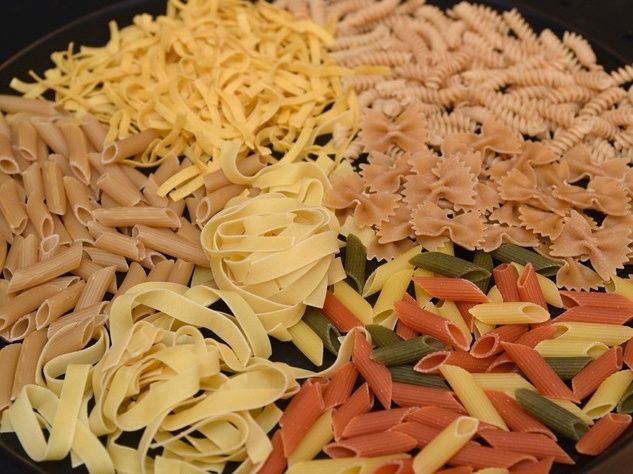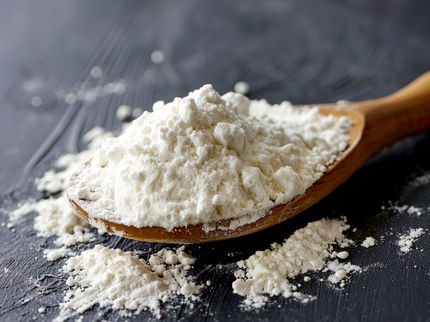Variety in pasta and noodles is becoming ever greater
Advertisement
pasta is popular. Whether as fresh pasta or dried, whether purchased or homemade: There are numerous variants and forms. But the variety is also increasing in the raw materials used. Pasta based on lentils, chickpeas or rice and other grains such as spelt are expanding the range of classic pasta made from durum wheat. For World Pasta Day on Oct. 25, 2022, TÜV SÜD provides an overview.

Variety in pasta and noodles is becoming ever greater
TÜV SÜD AG
According to the International Pasta Organization (IPO), 16.9 million tons of pasta were produced worldwide in 2021, twice as much as ten years ago. With over 500 varieties, no country has produced as many pasta varieties as Italy. And Italians are also world leaders in pasta consumption, eating 23.5 kg per capita there in 2021, according to IPO data. The world's top 5 pasta consumers also include Tunisia (17 kg), Venezuela (15 kg), Greece (12.2 kg) and Peru (9.9 kg). In Germany, annual per capita consumption is around 9.5 kg, according to Statista.
Many varieties, three basic ingredients
All over the world, there are variants, each with its own history of origin. They all have a very simple recipe in common: flour, water, salt, and varying amounts of other flavoring and coloring ingredients. The "flour" is finely or coarsely (haze, semolina) ground grain. In classic (Italian) pasta, for example, the flour is semolina from durum wheat, and in spaetzle it is a slightly coarser wheat flour (haze, double-handled flour). For the quality of all pasta products, a uniform grain size of the processed cereal product is of high importance. In the search for variety, internationality or regionality, other types of pasta have also gained importance in Germany. As a "flour" base ingredient, these use rice or other non-grain raw materials such as legumes or even algae.
Pasta varieties and basic ingredients
Pasta types Raw material base / typical ingredients Examples
Wheat pasta Durum wheat semolina or haze, salt Italy: penne, farfalle, spaghetti (classic pasta) Asia: Mie, Udon, Wan tan
Whole wheat pasta Durum wheat semolina made from whole wheat flour Variants of different
(at least 98% of the whole grain pasta shapes (see above)
with shells and sprouts)
egg pasta durum wheat semolina or haze, fresh, ribbon noodles, spaetzle, Maultaschen
frozen eggs or egg powder
(eggs mostly from barn farming)
Special pasta Other cereals Spelt noodles, buckwheat noodles,
(e.g. spelt, barley) Somen noodles
Colored pasta Durum wheat semolina plus coloring spinach noodles, saffron noodles,
vegetables or squid Strawberry noodles (with beet
cooked in sugar water)
Rice pasta "flour" from rice width and thin noodles,
Spring roll sheets
Glass pasta Pure starch from mung beans, glass noodles
Corn or rice
Potato pasta Potatoes, egg, durum wheat semolina Gnocci, Schupfnudeln
Konjac noodles "Flour" of the konjac root Shirataki, pad thai, miso noodles
Noodles made from new legumes, algae or alginates Chickpea, lentil, algae, raw materials soy noodles
The most important rule in the preparation
When it comes to preparation, everyone has their own "patent recipe": be it using more or less salt, adding a little vegetable broth to the cooking water (for example, in the case of whole-grain pasta), or using different methods when draining. Only one rule of thumb is useful: to cook pasta al dente, the raw ingredients should be boiled in plenty of bubbling water. The reasons lie in chemistry: when a lot of pasta is added to little boiling water, the cooking water cools rapidly. At these lower temperatures, the starch portion dissolves somewhat, but the protein portion does not denature quickly enough for a firm structure. This tends to make the noodles softer with no bite.
Dry pasta should be kept sealed, dark, dry and cool. If stored properly, classic pasta can be kept for about two years, egg pasta for only one year. Even pre-cooked pasta can be stored in the refrigerator for a few days (like fresh pasta from the store). Here, a little oil after quenching helps to prevent sticking together. The thin film of oil prevents the starch particles of adjacent noodles from sticking together.
Note: This article has been translated using a computer system without human intervention. LUMITOS offers these automatic translations to present a wider range of current news. Since this article has been translated with automatic translation, it is possible that it contains errors in vocabulary, syntax or grammar. The original article in German can be found here.
























































